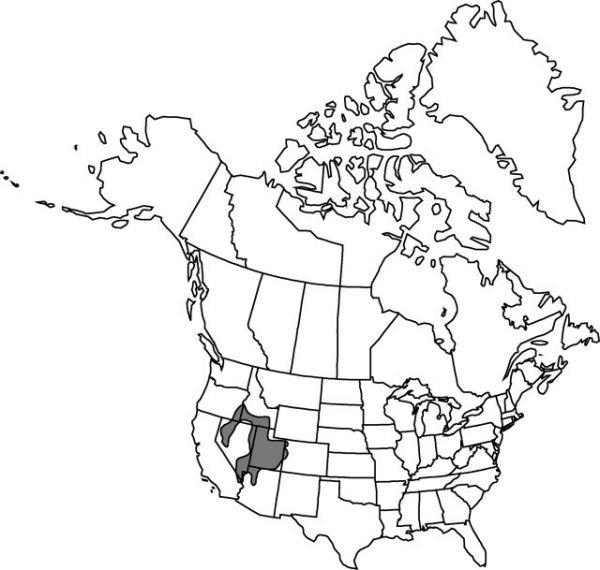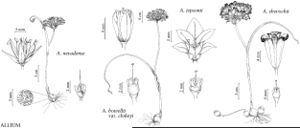Difference between revisions of "Allium nevadense"
Botany (Fortieth Parallel), 351, plate 38, figs. 1–3. 1871.
FNA>Volume Importer |
FNA>Volume Importer |
||
| Line 49: | Line 49: | ||
|publication year=1871 | |publication year=1871 | ||
|special status= | |special status= | ||
| − | |source xml=https://jpend@bitbucket.org/aafc-mbb/fna-data-curation.git/src/ | + | |source xml=https://jpend@bitbucket.org/aafc-mbb/fna-data-curation.git/src/f6b125a955440c0872999024f038d74684f65921/coarse_grained_fna_xml/V26/V26_442.xml |
|genus=Allium | |genus=Allium | ||
|species=Allium nevadense | |species=Allium nevadense | ||
Revision as of 19:32, 24 September 2019
Bulbs 1–3, not clustered on stout, primary rhizome, with 0–2 stalked, basal bulbels, ovoid, 1–2 × 0.8–1.5 cm; outer coats enclosing 1 or more bulbs, brown, membranous, usually prominently cellular-reticulate, cells ± transversely elongate, intricately contorted, without fibers; inner coats white or pinkish, cells elongate, intricately contorted. Leaves persistent, 1, basally sheathing, sheath not extending much above soil surface; blade solid, terete, 10–20 cm × 1–3 mm. Scape persistent, solitary, erect, ± solid, terete, 5–15 cm × 1–2.5 mm. Umbel persistent, erect, compact, 5–25-flowered, hemispheric, bulbils unknown; spathe bracts persistent, 2–3, 3–7-veined, ovate to lanceolate, ± equal, apex acuminate. Flowers stellate, 7–12 mm; tepals spreading, white or pinkish white with dark pink midveins, lanceolate to ovate, ± equal, becoming papery in fruit, margins entire, apex acute to acuminate; stamens included; anthers purple; pollen yellow; ovary crested; processes 6, prominent, ± triangular, margins entire to notched or shallowly toothed; style linear, equaling stamens; stigma capitate, scarcely thickened, unlobed; pedicel 8–16 mm. Seed coat dull; cells minutely roughened. 2n = 14, 28.
Phenology: Flowering Apr–Jun.
Habitat: Sandy, rocky, or occasionally clay soils on desert plains and hillsides
Elevation: 1400–1700 m
Distribution

Ariz., Calif., Colo., Idaho, Nev., Oreg., Utah.
Discussion
Selected References
None.
